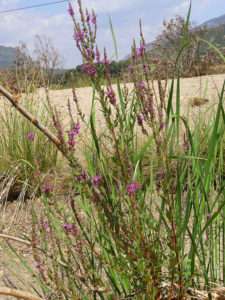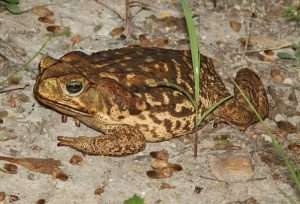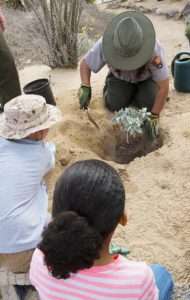
Okay, I know I talk about invasive species a LOT here. A couple of weeks ago I posted about how they were intentionally spread by acclimatization societies a century or more ago. And then before that I wrote a post discussing the difference between invasive species moved by humans, and species moving into neighboring areas due to climate change displacement. So I was going to give it a rest for a bit, but then I read a recent paper that demonstrates how battling invasive species can help mitigate the effects of anthropogenic climate change. Which, of course, means I had to blog about it because it’s actually a pretty exciting piece of research.
The study, published by the Proceedings of the National Academy of Sciences, essentially states that in three cases out of four, the effects of invasive species have on an ecosystem are basically the same as the combined effects of the invasive species plus another destructive factor like warming temperatures or drought. In other words, when you have invasive species in an ecosystem, they’re going to do serious damage whether that ecosystem is facing other stressors or not.
How can that be? The study was a meta-analysis of almost 100 previous studies, with over 450 individual examples of affected ecosystems. About a quarter of the time, the presence of invasive species exacerbated the effects of other environmental pressures like climate change, and vice versa. But the rest of the time the impact on the ecosystem wasn’t much more with multiple pressures compared with the impact of invasive species alone. In short: the invaders were wreaking massive havoc with or without other complicating factors.
Better News Than Expected
Believe it or not, this may actually be a silver lining. Ecosystems and their inhabitants around the world are being damaged and destroyed by our activities, from pollution and resource extraction to poaching and development. It can feel overwhelming to think about just how many problems our planet faces. Yet when we’re able to identify a particularly devastating factor and something we can reasonably do about it, that gives us a clearer path to try to make things better.

More importantly, the results of the study demonstrate the power of creating change on a local level. None of us can snap our fingers and make climate change just disappear. But we can get out there and make efforts to improve things in our own corners of the world, with effects that add up. That includes efforts to get rid of invasive species and restore native ones. If you can make your local ecosystem more resilient, that makes it that much more likely to be able to weather other pressures, including those associated with climate change.
Obviously some ecosystems will see some migration of species from adjacent areas as temperatures continue to warm, and droughts, fires, and floods displace species. But as I’ve pointed out previously, adjacent ecosystems often already have some overlap in native species, so it’s not the same as dropping an animal or plant from halfway around the world into a totally new place. Invasive species are invasive because they overrun ecosystems they had no previous contact with, and where there’s nothing to keep them in check.
Even if not every native species in a given ecosystem is able to adjust to the changes wrought by climate change, it appears that one of the best things we can do to maximize their chances is to remove competition and resource depletion from invasive species. Here in the Pacific Northwest, a meadow full of a variety of native grasses, wildflowers, and other plants will be more likely to support life than one that has been taken over by Scotch broom (Cytisus scoparius), cheatgrass (Bromus tectorum), or other non-natives that neither feed native animals nor allow native plants room to grow.
Removing Invasive Species, Adding Native Ones
So how can you get involved in the effort to control–and hopefully eradicate–invasive species in your area? If you have a yard or other property, take an inventory of the species you find there and do your best to identify them as native or invasive. Then research the best ways to get rid of as many of the invasives as possible, and plant or otherwise promote more natives (the more native species represented, the better!)
If all you have is a tiny patio or balcony–that’s okay! The more people who add a few native plants to their outdoor spaces, the more we create a patchwork of oases that can add up to a significant support system for wildlife. And you can do this even in an urban area; New York City’s High Line Park, for example, is an old rail line-turned-park in the middle of Manhattan that supports a surprising amount of biodiversity.
 If you have the time and other resources, consider giving time and/or money to nonprofit organizations working on habitat restoration in your area; often they’re able to restore larger areas with such group efforts, which not only creates more acres of habitat, but in some cases helps patch fragmented habitats back together. Plus it’s a fun way to meet other people, learn more about native ecosystems, and connect with others who are trying to make the world a better place.
If you have the time and other resources, consider giving time and/or money to nonprofit organizations working on habitat restoration in your area; often they’re able to restore larger areas with such group efforts, which not only creates more acres of habitat, but in some cases helps patch fragmented habitats back together. Plus it’s a fun way to meet other people, learn more about native ecosystems, and connect with others who are trying to make the world a better place.
